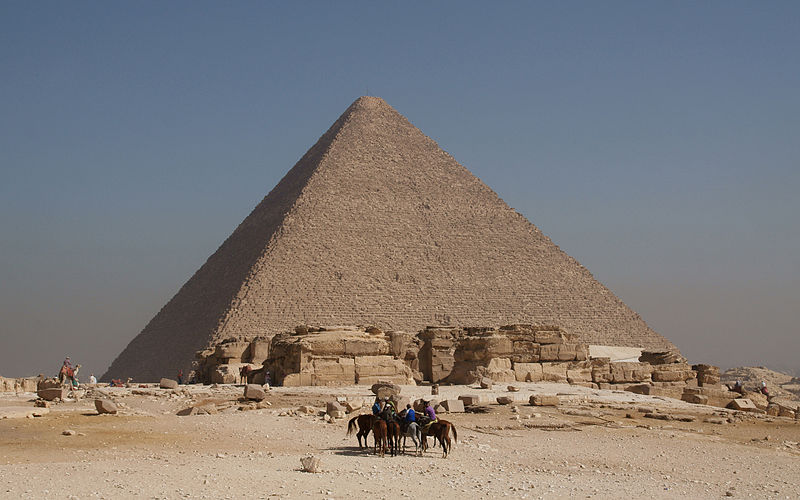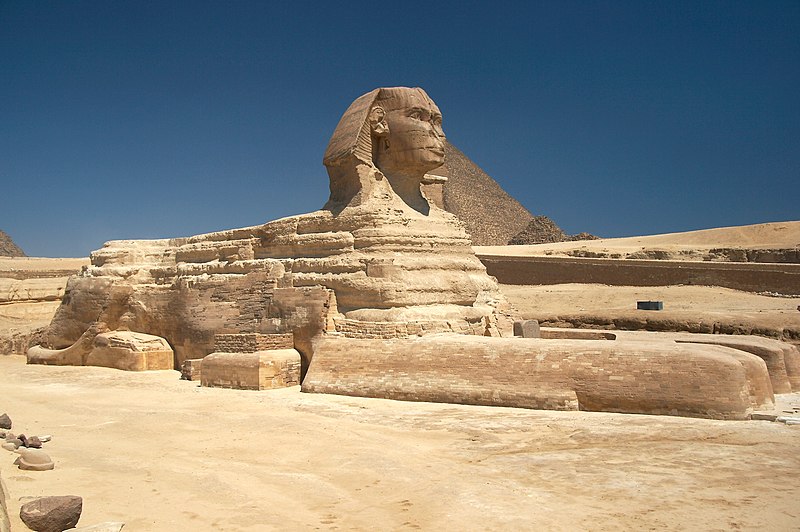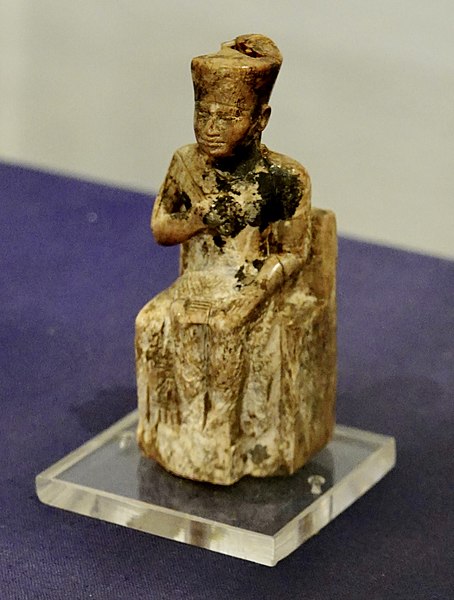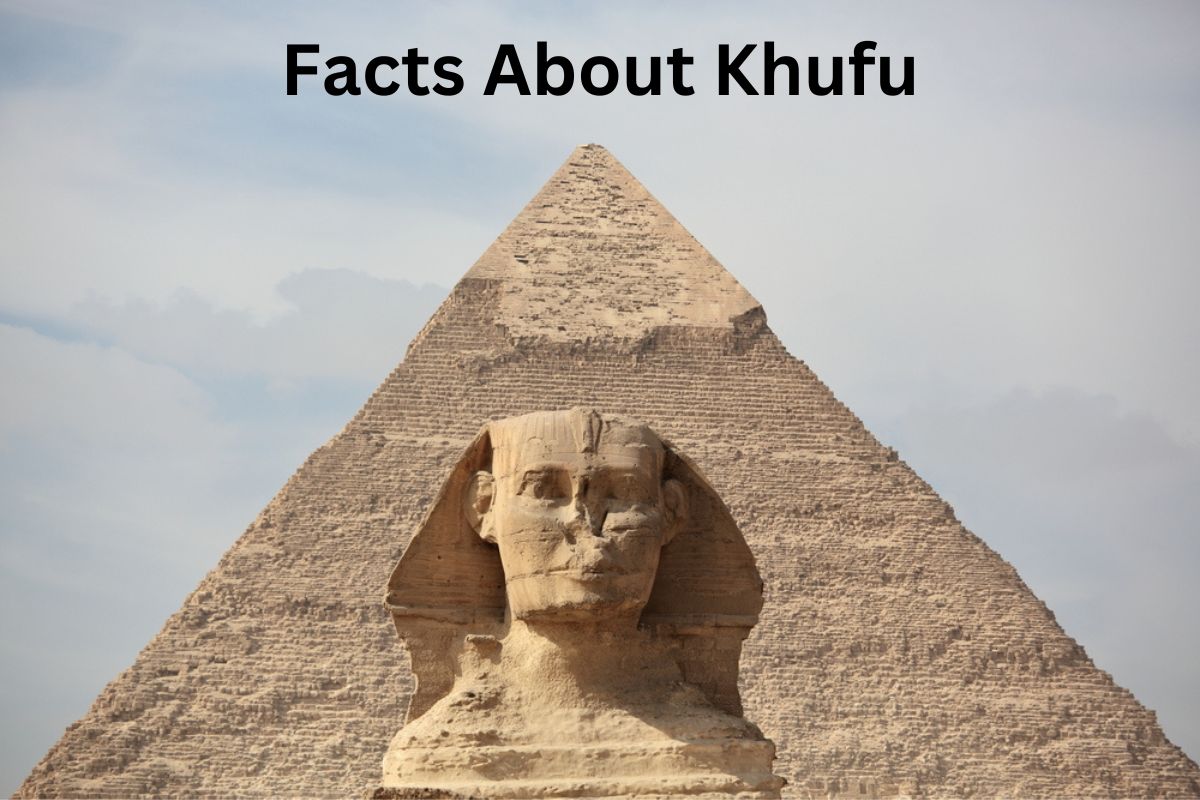Khufu, also known as Cheops, was an ancient Egyptian pharaoh who ruled during the Fourth Dynasty of the Old Kingdom period.
He is best known for commissioning the construction of the Great Pyramid of Giza, one of the Seven Wonders of the Ancient World. Khufu’s reign marked a period of prosperity, stability, and cultural development in ancient Egypt.
His architectural achievements, including the Great Pyramid and the Sphinx, continue to inspire awe and fascination, showcasing the advanced engineering and mathematical knowledge of the ancient Egyptians.
khufu Facts
1. Khufu was an ancient Egyptian pharaoh who ruled during the Fourth Dynasty of the Old Kingdom period
Khufu, also known as Cheops, was an ancient Egyptian pharaoh who ruled during the Fourth Dynasty of the Old Kingdom period.
He ascended to the throne following the reign of his father, Sneferu, and ruled for approximately 23 years, from 2589 BC to 2566 BC.
His reign marked a significant period of political stability, economic prosperity, and cultural development in ancient Egypt.

2. Khufu is best known for commissioning the construction of the Great Pyramid of Giza, the largest pyramid ever built
Khufu is best known for commissioning the construction of the Great Pyramid of Giza, one of the most iconic and enduring architectural marvels in human history.
The construction of this colossal pyramid was a massive undertaking, employing an estimated workforce of tens of thousands of skilled laborers, including stone masons, architects, and engineers.
The pyramid was built as a monumental tomb for Khufu, intended to house his body and ensure his safe transition to the afterlife.
3. The Great Pyramid of Giza was built as a tomb for Khufu and is one of the Seven Wonders of the Ancient World
The Great Pyramid of Giza is an astonishing testament to the advanced engineering and architectural knowledge of the ancient Egyptians.
The pyramid was originally built to a height of over 480 feet (146 meters), making it the tallest man-made structure in the world for over 3,800 years until the construction of the Lincoln Cathedral in England.
Its base covers an area of approximately 13 acres (5.3 hectares), and it is estimated to have contained over 2 million individual blocks of limestone, each weighing an average of 2.5 tons.
4. Despite its massive size, the construction of the Great Pyramid was remarkably precise
The construction of the Great Pyramid of Giza under Khufu’s reign demonstrates an impressive level of precision and accuracy. The edges of the pyramid’s base are aligned remarkably close to the cardinal directions of north, south, east, and west.
The alignment error is less than 0.6 degrees, which is an astonishing achievement considering the pyramid’s size and the technological limitations of the time. This precision suggests that the ancient Egyptians possessed advanced knowledge of astronomy and geometry, enabling them to align the pyramid with such accuracy.

5. Khufu’s reign marked a period of great prosperity and stability in ancient Egypt
Khufu’s reign marked a period of great prosperity and stability in ancient Egypt. The country experienced significant economic growth and flourishing trade networks during this time.
The Nile River played a crucial role in Egypt’s prosperity as it provided fertile soil for agriculture and facilitated trade and transportation.
The stable political climate under Khufu’s rule allowed for the expansion of trade routes, both within Egypt and with neighboring regions, resulting in the influx of valuable resources and the flourishing of arts, crafts, and industries.
6. Khufu’s family members were influential figures in ancient Egypt
Khufu’s family played a prominent role in ancient Egyptian history. His father, Sneferu, was a significant pharaoh in his own right and is credited with building the Bent Pyramid and the Red Pyramid at Dahshur.
Sneferu’s architectural experiments and successes set the stage for the monumental construction projects that would follow under Khufu’s reign.
Khufu’s immediate family members also held influential positions. His mother, Queen Hetepheres I, was an important figure in the royal household. Khufu had several wives, including Queen Meritites, who was likely his chief consort.
Their children also played significant roles in Egyptian history. Khafre, Khufu’s son, succeeded him as pharaoh and built the second-largest pyramid at Giza, while Djedefre, another son, established his own royal pyramid complex at Abu Rawash.
The prominence of Khufu’s family members demonstrates the hereditary nature of power and the continuity of the royal lineage in ancient Egypt. It also highlights the significant contributions of multiple generations in shaping the political, cultural, and architectural landscape of the time.

7. Khufu’s rule saw the continued development of religious and funerary practices in ancient Egypt
Khufu’s reign saw significant developments in religious and funerary practices in ancient Egypt. The pharaoh held a unique and central role in religious beliefs, being considered a divine ruler with a crucial connection to the gods.
The construction of the Great Pyramid and the accompanying mortuary complex at Giza was part of a larger religious framework aimed at ensuring Khufu’s successful transition to the afterlife.
Elaborate religious rituals and ceremonies were performed to prepare the pharaoh for his journey into the realm of the gods. These rituals included the Opening of the Mouth ceremony, where the pharaoh’s mouth was symbolically opened to enable him to breathe and speak in the afterlife.
Priests and priestesses carried out various purification rites, offerings, and prayers to ensure the pharaoh’s eternal well-being and divine favor.
8. Khufu’s pyramid complex at Giza included not only the Great Pyramid but also several smaller pyramids
The Great Pyramid of Khufu’s complex at Giza consisted not only of the iconic pyramid itself but also several smaller pyramids and structures. These structures were dedicated to Khufu’s family members, including his wives and other close relatives.
These subsidiary pyramids were smaller in size and served as tombs for members of the royal family, symbolizing their connection to the pharaoh’s divine authority.
The complex also included temples and causeways that connected the various components. The temples were used for religious ceremonies and offerings, while the causeways served as processional routes for the pharaoh’s funerary rituals.
These structures formed an interconnected architectural ensemble designed to facilitate the pharaoh’s journey to the afterlife and to perpetuate his royal lineage.
9. The interior of the Great Pyramid of Khufu contains several chambers, including the King’s Chamber and the Queen’s Chamber
The interior of the Great Pyramid of Khufu contains several chambers and passages, which have intrigued archaeologists and Egyptologists for centuries. The most prominent chamber is the King’s Chamber, located near the center of the pyramid. It is a large room made of polished granite and houses a massive granite sarcophagus.
Despite its grandeur, no evidence of Khufu’s burial or his remains have been found within the pyramid, leading to ongoing speculation about the actual location of the pharaoh’s final resting place.
The Queen’s Chamber, positioned higher within the pyramid, is a smaller and less ornate chamber. Its purpose and significance remain a subject of debate among experts.
Some theories suggest it may have had a symbolic or ritualistic function, while others propose it was a practical construction element or a subsidiary burial chamber.
10. Khufu’s legacy extends beyond the Great Pyramid
Beyond the construction of the Great Pyramid, Khufu’s reign witnessed the creation of other remarkable architectural projects. One of the most notable is the Great Sphinx, believed to have been built during his time as pharaoh.
The Sphinx is a massive statue located near the pyramids at Giza, featuring the head of a human and the body of a recumbent lion. It is a representation of royal power, wisdom, and divine authority, often associated with the pharaohs. The precise purpose and symbolism of the Sphinx remain topics of speculation and study, adding to its enigmatic allure.
Khufu’s legacy extends not only through his architectural achievements but also through the stability and prosperity of his reign.
His rule marked a period of cultural advancement and economic growth in ancient Egypt, while his family members continued to shape the course of Egyptian history. The enduring impact of Khufu and his monumental constructions showcases the remarkable civilization and achievements of ancient Egypt.
